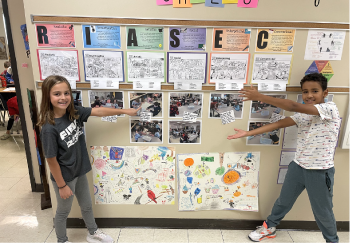It seems we can’t talk about public education anymore without using a lexicon of competition. School choice policies, by their very nature, suggest an either/or mindset; either families choose this school or they choose that school. Thinking of schools as pitted against one another—as players in a competition—suggests that in order for one district to thrive, another must fail. But that simply is not true.
Instead of talking about one local district cannibalizing the enrollment numbers of another, what would it look like to dream up a regional enrollment campaign? Instead of pushing your STEAM program to surpass that of the district across the county, what would it look like to collaborate and improve learning opportunities for all students? There’s nothing wrong with a competitive spirit, but what happens when districts quit competing with each other and, instead, join forces to compete with the challenges and limitations imposed upon them? Multiple districts can, in fact, thrive all at once—if they work together.
Here, we’ll walk through three examples of what districts have accomplished through effective collaboration. Our hope is that you’ll find something you want to try, then share it with the districts and leaders around you. After all, you know what they say about rising tides.
Collaboration can lead to program innovation.
According to Dr. Jeff Hadley, superintendent of Avonworth School District in Pennsylvania, districts in Allegheny County—including his—have a uniquely collaborative approach to education. Hadley describes the relationships between the districts in his area as a “regional ecosystem,” one in which school leaders both support and challenge one another. “You always look at what your neighbor is doing and think, Oh, that’s really cool. I wish we were doing something like that,” Hadley says. “It creates an awareness that pushes you to think of new and better ways of doing what you’re already doing.”
But before we delve into what’s come from the relationships between districts in Allegheny County, let’s talk about where those relationships started: the Grable Foundation, a Pennsylvania-based nonprofit focused on bringing innovative education initiatives to regional districts. The foundation accomplishes this in part by encouraging collaboration between educational institutions, including schools, libraries and after-school programs. So that’s where Hadley’s “ecosystem” started, but not where it stopped.

With collaboration having proven successful at the regional level, districts in Allegheny County moved to collaborate at the national level. How? By applying to be members of the Digital Promise League of Innovative Schools, a national network of districts focused on implementing—and sharing—innovative practices. A key benefit of being selected as a member is the opportunity to visit and learn from other schools across the league.
